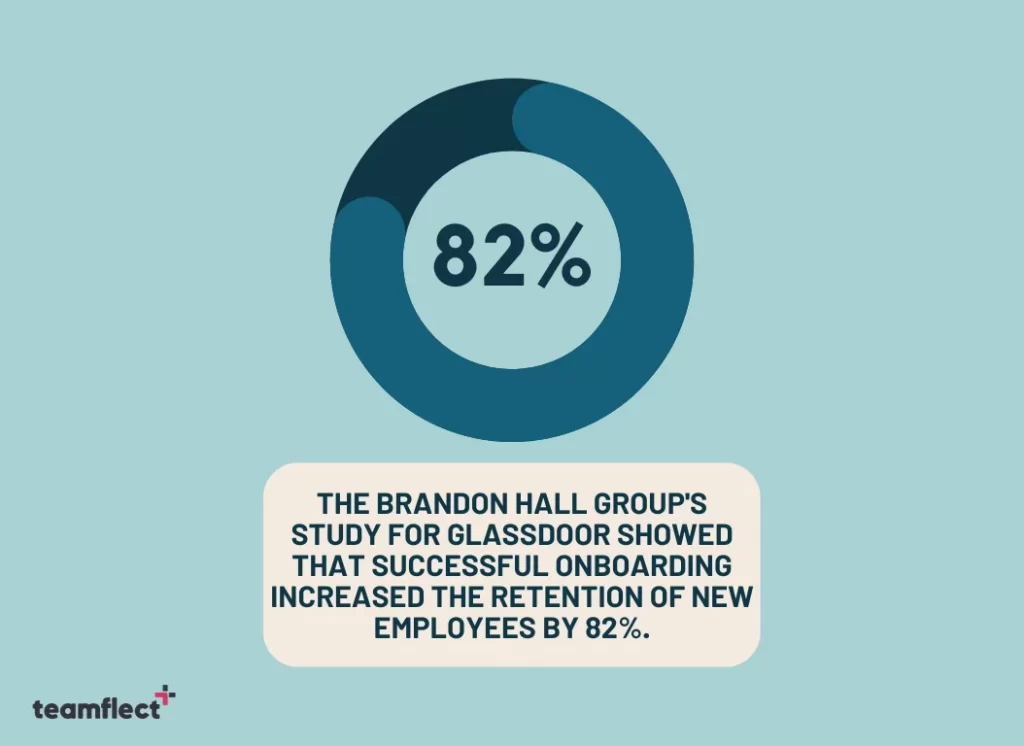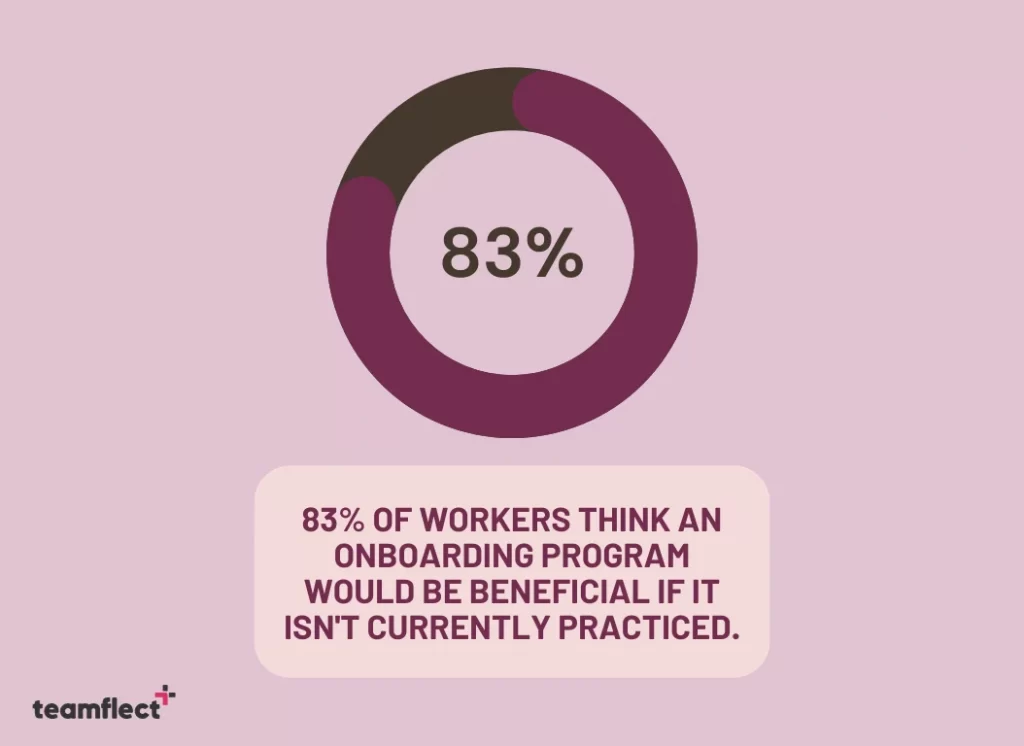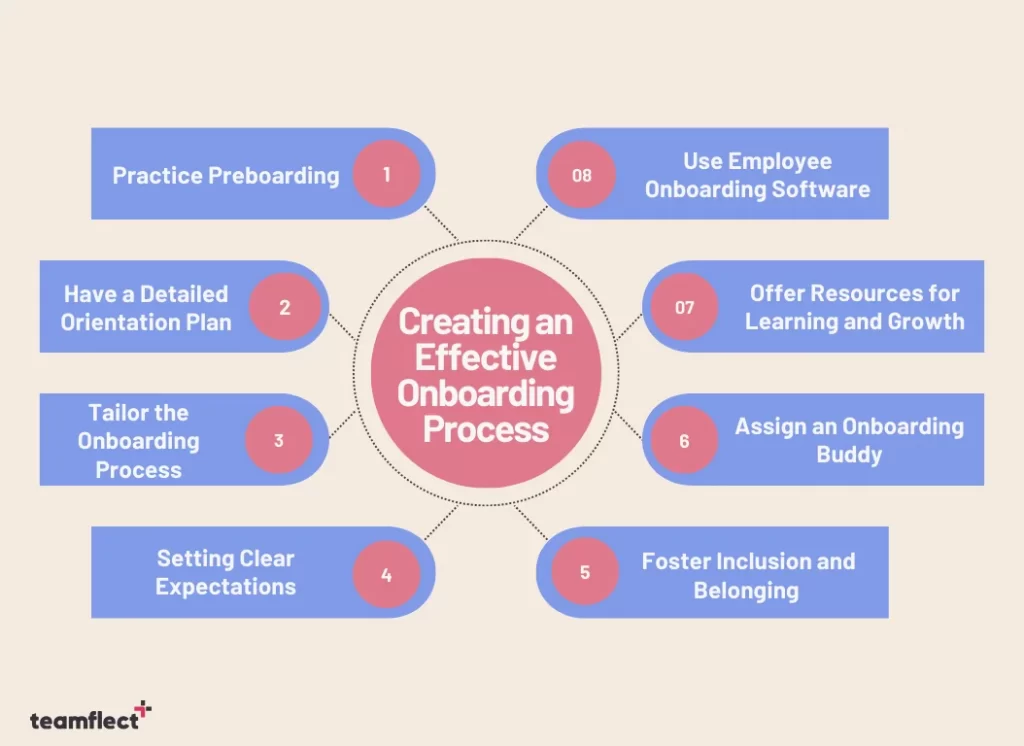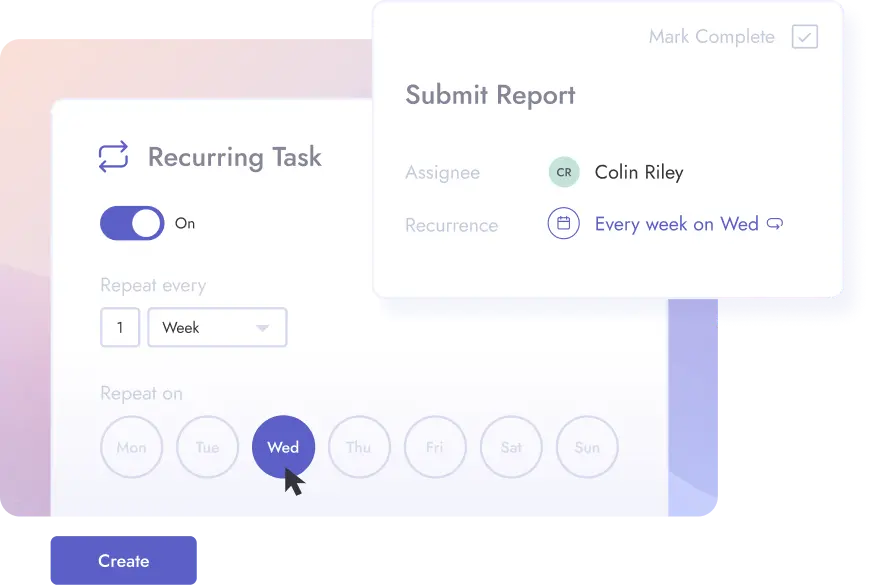Your new employees might be anxious when they first start their jobs, but an effective onboarding process can eliminate the anxiety and can smoothly integrate the new hires into your workplace.
Your company makes a first impression during the onboarding. Making good first impressions can positively affect your company’s relationship with the new hire.
Making a great first impression can increase new employee productivity, engagement, and loyalty. However, you may portray your working environment way more positively than it is.
This might cause disappointment later on. To avoid this, you need to give a realistic first impression while welcoming them during onboarding.
Before starting with the practices of effective onboarding, we would like to add some important statistical information.
The key statistics below about onboarding will provide insight into the effectiveness of the onboarding process.
Table of Contents
Interesting Onboarding Statistics
Using effective onboarding strategies is beneficial for your company and your employees, and the data below clearly proves this. Here you can find the relevant statistics which demonstrate the significance of creating an effective onboarding program:
- The Brandon Hall Group’s famous study for Glassdoor showed that successful onboarding increased the retention of new employees by 82%.

- Good training and development, according to 35% of employees, make them excited to work for a company.
- Millennials were asked what qualities they thought made a company an appealing place for employment in a PWC study. The third most frequently given response was training and development, with 35% of respondents stating it’s fundamental.
- Standard onboarding procedures improve productivity by 50%.
- According to research from Society For Human Resource Management, new hires are 50% more productive after standard onboarding practices.
- One of the onboarding data revealed by a Work Institutes report was the fact that 37.9% of departing workers do so within the first year of their job. Within six months, two out of every three of these workers choose to leave their employer.
- Career growth was the main justification given for leaving within the first year. Employers can reduce this by presenting training opportunities and a career plan during the onboarding.
- Employees who experience effective onboarding are 18 times more dedicated to their work.
- According to a recent survey, 83% of workers think an onboarding program would be beneficial if it isn’t currently practiced.

- Employees are 10 times more inclined to stay within a company if they experience a positive onboarding process.
- Onboarding research revealed the key to success. Employees will be motivated to stay if you provide them with a positive early experience within the first 90 days.
- If a company invests in its employees’ learning and development, 94% will stay there longer.
- People rely on management and team leaders for assistance. According to the LinkedIn Learning Report, organizations could potentially retain 94% of those surveyed if they were offered opportunities for mentoring, training, and education.
These eye-opening statistics demonstrate the importance of effective onboarding. Now that we have given the factual information about onboarding, it’s time to focus on how to create an effective onboarding experience for new hires.
Creating an Effective Onboarding Process
1. Practice Preboarding
If you start with onboarding before the first day, you could present a new employee with an early start on learning about the organization, its culture, and the demands for their work. Consequently, they may feel more ready and eager to work for your company.
Preboarding also has the potential to improve new employees’ engagement and retention rates.
You may form a bond with the new employee before they even begin working with you by starting the onboarding process early. They can feel more included and committed to their work as a result.
- If you start with onboarding before the first day, write welcome emails with the required details.
- Give users early access to resources, equipment, and software
- Provide a buddy or mentor to recruits to ease their performance anxiety and to provide support for them.
Becoming acclimated to all the various software and systems in a company is one of the most significant difficulties for an employee on their first day. The systems used at work will seem strange and puzzling to your new hires.
This is why it’s crucial to offer new employees access to the tools and resources they’ll need before you begin the onboarding process.
Assigning new employees a buddy or mentor throughout the onboarding allows you to create a more effective onboarding program.
Not everyone is at ease about asking questions when they first start working at a company. Offering your new employees an expert to gain insight from and ask questions to is a fantastic preboarding practice.
Ensure that your performance management system supports adjustable relationship labeling if you’re currently using remote team management or if you are just using it regularly.
Teamflect provides great value in terms of facilitating the preboarding process. Users of Teamflect can label their coworkers according to the nature of their work relationship.
An example of this might be Mentor/Mentee or Manager/Direct Report, and so on.
2. Have a Detailed Orientation Plan
When onboarding new hires, you must develop a thorough orientation plan. The following three items can be included in your plan:
- Outlining the culture, values, and mission of the company
- Outlining work responsibilities, and roles.
- Ensure that your new hire spends quality time during orientation with her/his colleagues.
It’s important to let your team members know exactly what kind of team they are joining. Because of this, you should include a summary of the company’s mission, values, and culture.
When integrating new employees, it’s critical to go over their future roles within the organization. So, new hires can understand exactly what is expected of them during onboarding, and especially, how to fulfill those requirements.
Schedule time during orientation for the new hire to meet his or her future teammates.
Try to incorporate some enjoyable activities into the quality time spent together because an employee will likely remember his/her first day at work.
To achieve this, you can implement orientation games. You may create many different games, but one is called Photo Hunt.
The goal is to provide the new employee with a list of names and pictures of existing employees. The pictures and the names should match. It’s an easy game that can acclimate the new hire to his/her new colleagues.
3. Tailor the Onboarding Process
An effective employee onboarding process can be achieved when you consider the traits of your new hire.
When onboarding new employees, organizing small meetings always works better than holding large, crowded gatherings. Each person being onboarded should have a unique experience during the onboarding process.
Creating an effective onboarding process entails being aware of the particular history, learning preferences, as well as goals of each new employee.
For instance, including more videos and infographics in the onboarding materials may be more helpful for a recruit who prefers to learn visually.
Moreover, giving new hires a chance for professional development could be valued by them if they were interested in career development.
Individual requirements and preferences can be determined in a number of methods, including personal interviews, questionnaires, and recruitment procedure observations.
4. Setting Clear Expectations
Defining responsibilities and performance goals is crucial so employees can assess their own success and get ready for the future by having specific goals that are set from the beginning.
Setting realistic, fair goals and deadlines will help you regulate expectations and communicate successfully with your coworkers and employees.
An organization’s performance depends on having effective communication procedures, which can reduce staff turnover.
Establish both short- and long-term goals, then ask supervisors to routinely check in to determine if new employees are accomplishing them.
An example of a short-term goal can be “complete 40% of the business English course by Thursday” whereas a long-term goal might be, “finish 20 projects within a year.”

5. Foster Inclusion and Belonging
Belonging and inclusion are two of the big drivers of an effective onboarding program. Always make new hires feel accepted, respected, and appreciated during the onboarding by establishing a culture of belonging and inclusion.
Allow your new recruits to voice their thoughts and worries. Then spend time listening to them with compassion and interest.
Also, build a sense of connection and community among them. To do this, you may form networks to aid in employees’ career and personal development.
To have an effective onboarding process you may also develop a DEI training course for your new hires. DEI is an acronym for diversity, equity, and inclusion.
It’s a fundamental concept since it involves ethical work practices. So, you need to implement this concept for an effective onboarding process as well.
During the onboarding, make DEI training a requirement for each new employee. The topics of microaggressions, unconscious bias, and the basics of DEI should all be covered in this class.
Make sure the onboarding includes necessary training resources to assist new employees in succeeding within their first 90 days.
6. Assign an Onboarding Buddy
New employees may utilize a network of support that is specifically called an onboarding buddy. systems, while they adapt to working at your organization. Responsibilities of an onboarding buddy may include:
- Welcome the new hires on their first day of work
The first day an employee spends at a new job can be tense and difficult. As soon as the new employee walks into the office, their onboarding buddy needs to be there to welcome them.
- Introduce the new employee to his/her colleagues
The onboarding buddy should introduce the new employee to as many colleagues as he/she can within the first few days after the employee starts working.
The focus should be introducing the colleagues whose work require interaction with them.
- Respond to questions about their new job
Answering questions about the organization and the particular position is among an onboarding buddy’s primary duties.
In comparison to asking a manager, new employees will probably feel more at ease asking their onboarding buddy questions. This may happen because employees may feel like they shouldn’t bother their superiors.
- Encourage the new hire to observe you
The majority of new employees won’t be ready to get started with their daily tasks on the first day or possibly in the first few weeks.
To gain an understanding of how the task is carried out, onboarding buddies can have their new employees observe them while they work on important tasks.
- Organize weekly check-in meetings with new hires
Throughout at least the first month of the new employee’s employment, onboarding buddies should meet them once a week to check-in.
The onboarding buddy should assess how at ease new hires are in the organization and their position during these sessions.
This practice will enable measuring onboarding effectiveness. They must ensure to respond to any questions that remain until the new hire feels entirely comfortable at the organization.
7. Offer Resources for Learning and Growth
Offering resources that new employees can use is one method to support continuous learning and growth.
These tools can take many forms, including access to company libraries or learning portals, webinars, workshops, and online training courses.
The ultimate objective is to equip new employees with the resources they require to improve their knowledge and competence.
To make sure the resources are up-to-date and helpful for new hires, it’s critical to routinely examine and modify them.
To further customize the materials to their unique demands, it can be helpful to get input from new hires regarding their learning styles and needs.
Learning opportunities promote employee retention and progress. It’s because employees are more inclined to have a favorable opinion of their employer if they feel that they support their professional development.
Knowing they are encouraged to grow and that their growth is attainable, prevents them from feeling stuck in the workplace.
It is important to communicate to new employees that learning is appreciated and that failure, which is an important component of learning, will be tolerated.
8. Use Employee Onboarding Software
You can onboard new recruits using a variety of employee onboarding technologies available today. In this context, implementing a system that enables new employees to understand concepts easily should be your main aim.
That is accomplished by utilizing a straightforward, creative, and user-friendly performance management system.
Although there are numerous fantastic task or OKR software that can serve as onboarding tools, Teamflect is by far the greatest option for Microsoft Teams users.
Onboarding new employees is simplified with the all-in-one performance management solution Teamflect.
Without ever leaving Microsoft Teams, Teamflect enables users to distribute and create tasks, share feedback using customizable feedback templates, execute entire performance evaluation cycles, and share customized recognitions.



